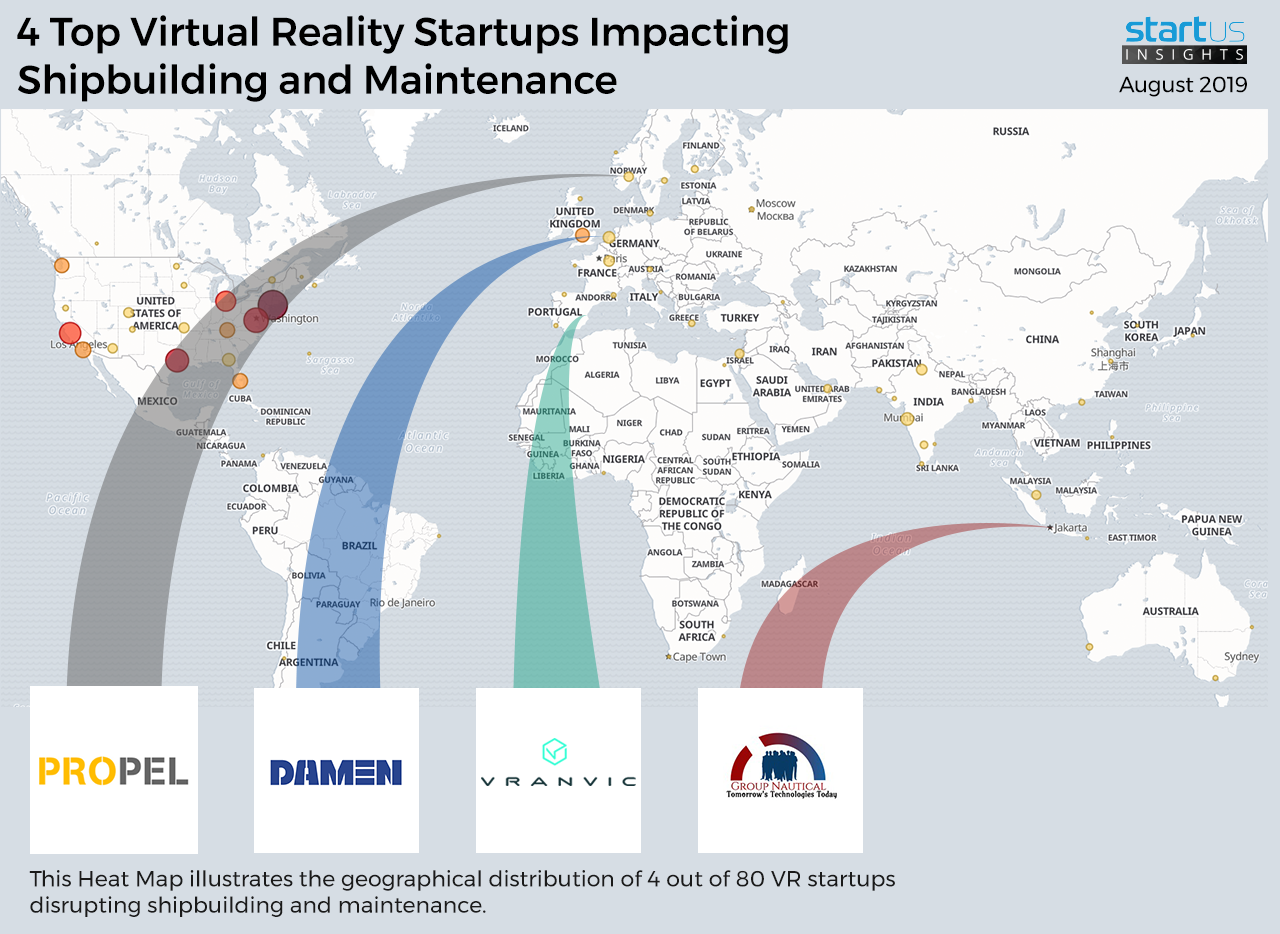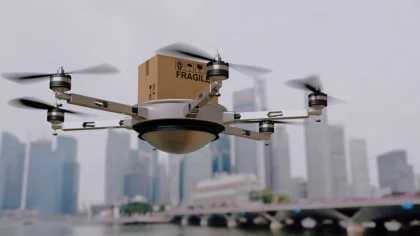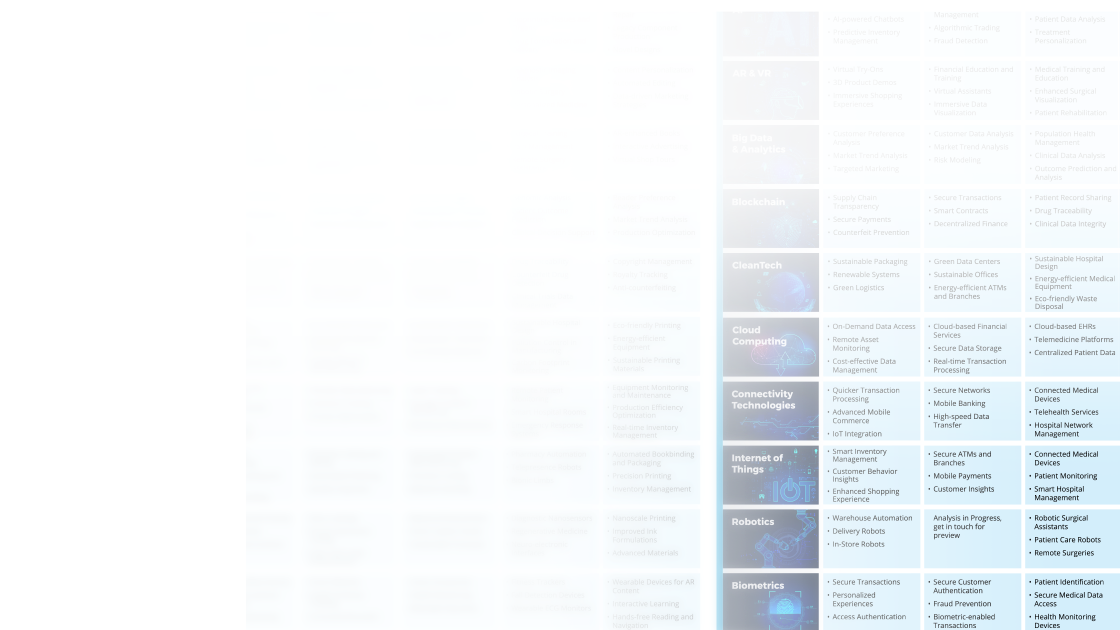Our Innovation Analysts recently looked into emerging technologies and up-and-coming startups working on solutions for shipbuilding. As there is a large number of startups working on a wide variety of solutions, we decided to share our insights with you. This time, we are taking a look at 4 promising Virtual Reality (VR) Startups impacting Shipbuilding.
Heat Map: 4 Top Virtual Reality Startups impacting Shipbuilding
For our 4 top picks, we used a data-driven startup scouting approach to identify the most relevant solutions globally. The Global Startup Heat Map below highlights 4 interesting examples out of 80 relevant solutions. Depending on your specific needs, your top picks might look entirely different.
Damen – Design Finalization
Virtual Reality (VR) is a valuable tool for developing spatial awareness and a detailed model of a ship as it can reveal design flaws and prevent routine workflows from being disrupted because of engineering decisions. This reduces costs and allows more time for finalizing designs. Dutch company Damen uses VR to enhance the design approval process, facilitate virtual interactions with all the crew members, who can access the model from anywhere in the world, and discuss potential pitfalls with the design.
Propel – Safety Simulations
Operating a naval vessel is a complex and dangerous task, and bigger vessels mean crew and other personnel aboard increases, as does the risk of accidents during operations. VR enables massive on-site exercises without the dangers of operating an actual ship. It allows for experts and crew members from all over the globe, to simultaneously visualize many onboard scenarios. Norwegian Propel develops a platform called SAYFR, which addresses the concerns for accidents occurring onboard ships. It uses immersive VR experiences and typical workplace scenarios for vessel crew members that give them a chance to interact with each other and facilitate maintenance tasks in a highly realistic environment. The major benefit lies in the fact that the ship could still be under construction during these exercises, making it easier to alter layout structures in case it causes issues in the real-world.
Group Nautical – Operational Training
Apart from simulating workplace scenarios at sea, VR provides ship engineers with the training and guidance they need during the shipbuilding process. VR-powered simulations make it possible to understand how their decisions will look in real life while addressing potential miscalculations or misconceptions about engineering components. Group Nautical is a Singaporean startup that provides VR PAL, a VR-based solution for operational training in the maritime industry. It combines a VR headset and earpieces to provide realistic visuals and auditory stimulation for trainees. This reduces onboarding time and accelerates speed to proficiency.
Vranvic – Sales & Customer Review
Safety and practicality aspects of VR aside, it is also used to present ship designs to their potential owners or operators. This is important as many vessels require custom styling, unique design aspects and more. This helps a company’s sales and business development units in securing deals to promote their services. Spanish Vranvic specializes in Virtual and Mixed Reality (MR) solutions for a variety of sectors including shipbuilding. The startup’s platform, Vranvic Shipyard, allows the marketing teams to win contracts, project managers in scheduling, and much more. This flexible solution allows a customer to introduce design changes with regards to the layout of the ship well before shipbuilding begins.
What About The Other 76 Solutions?
While we believe data is key to creating insights it can be easy to be overwhelmed by it. Our ambition is to create a comprehensive overview and provide actionable innovation intelligence for your Proof of Concept (PoC), partnership, or investment targets. The 4 startups showcased above are promising examples out of 80 we analyzed for this article. To identify the most relevant solutions based on your specific criteria and collaboration strategy, get in touch.









